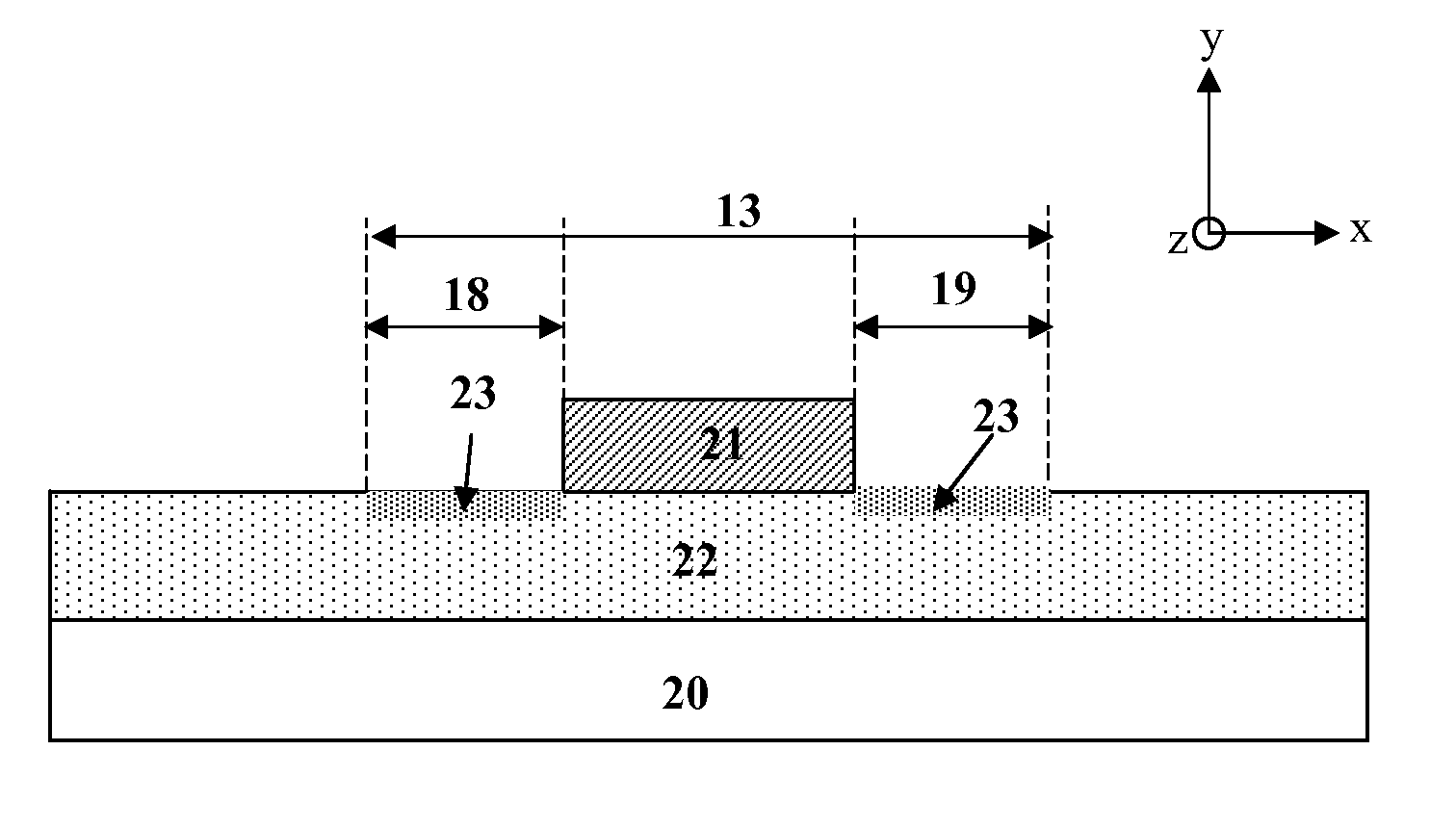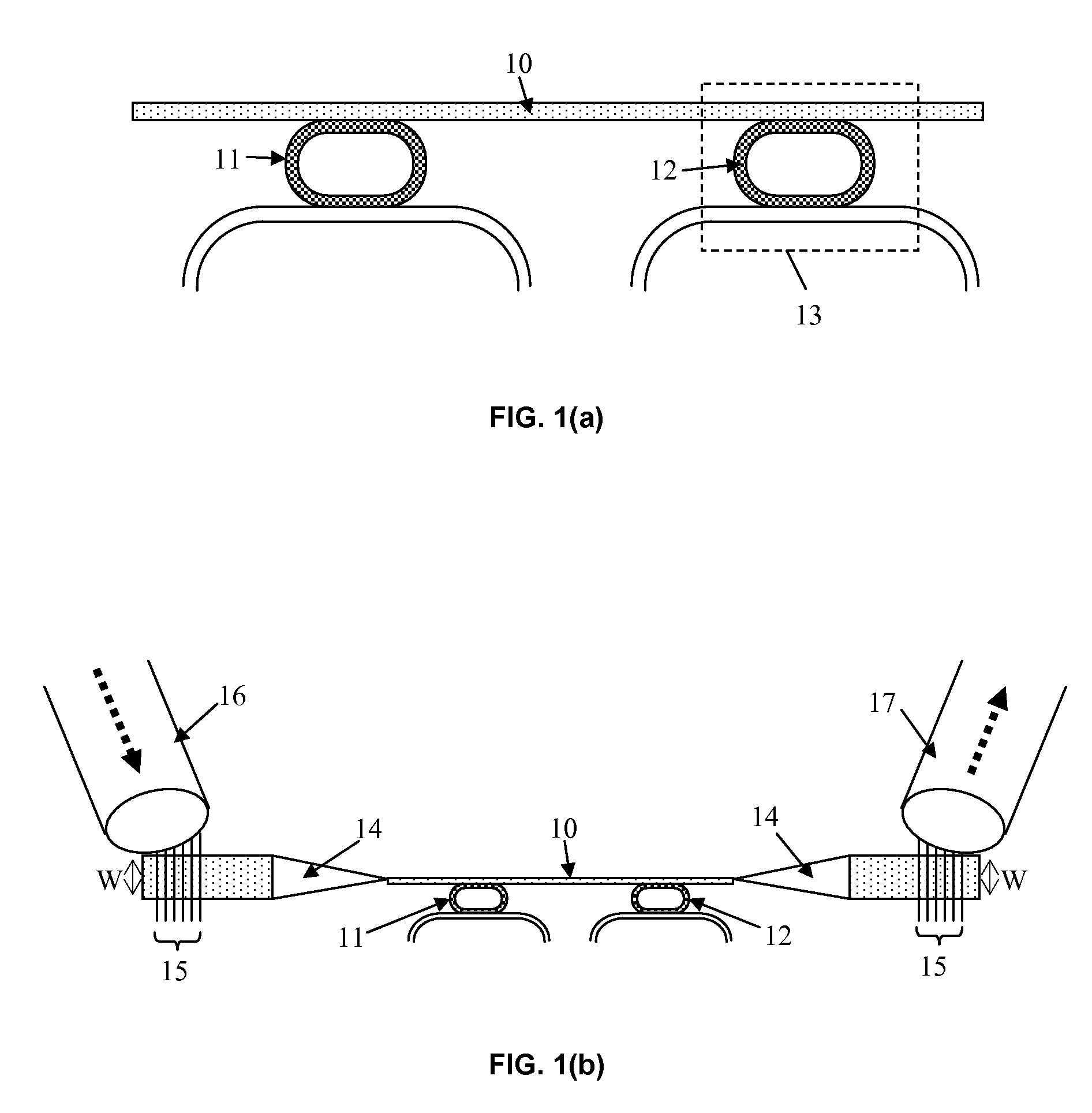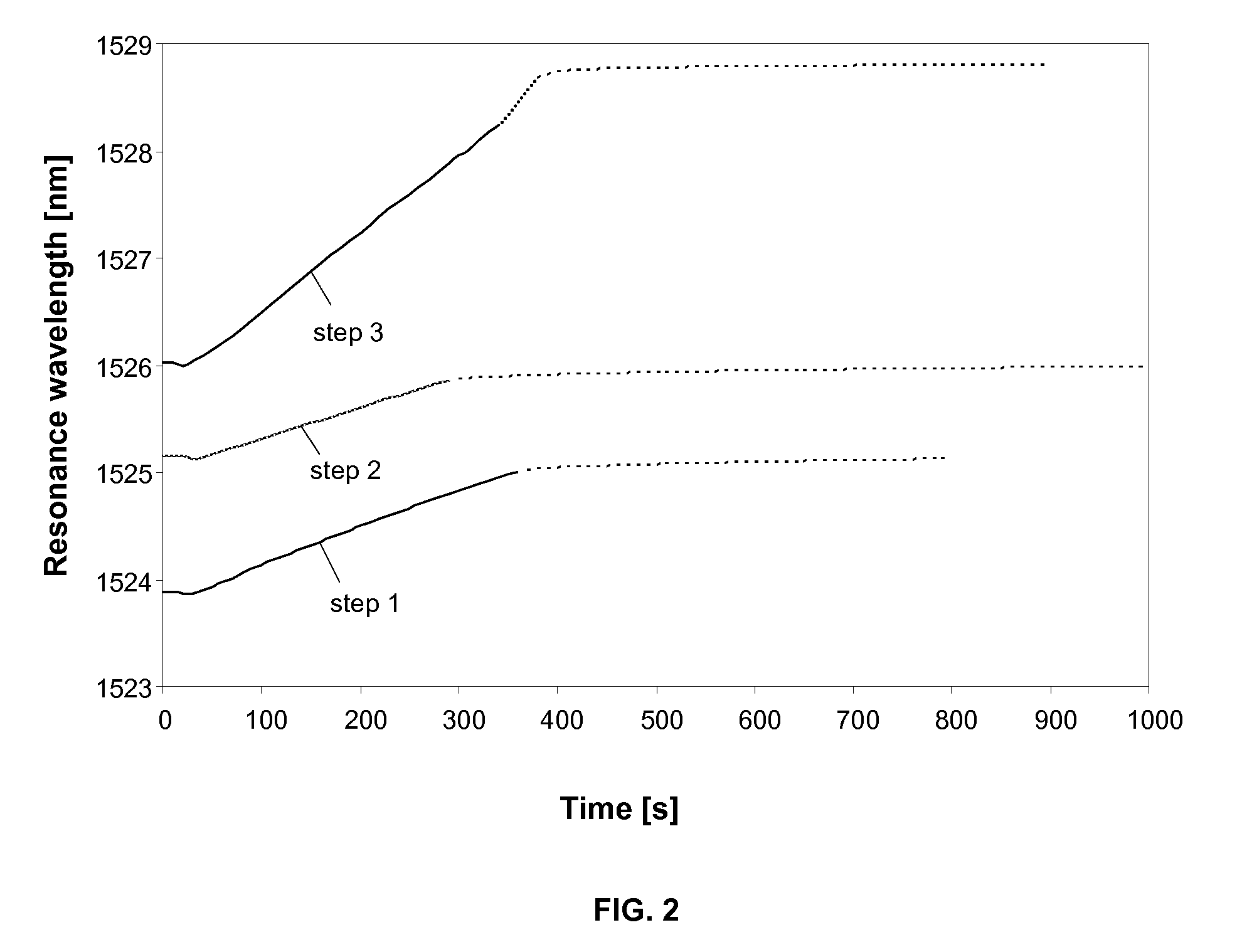Method for effective refractive index trimming of optical waveguiding structures and optical waveguiding structures
a technology of optical waveguides and trimming methods, applied in the field of effective refractive index trimming of optical waveguides and optical waveguides, can solve the problems of ring resonators being highly sensitive to fabrication errors, affecting the behavior or the properties of optical components, and unattractive for mass fabrication, so as to increase the effective refractive index, and reduce the effect of ring resonators
- Summary
- Abstract
- Description
- Claims
- Application Information
AI Technical Summary
Benefits of technology
Problems solved by technology
Method used
Image
Examples
Embodiment Construction
[0032]In the following detailed description, numerous specific details are set forth in order to provide a thorough understanding of the disclosure and how it may be practiced in particular embodiments. However it will be understood that the present embodiments may be practiced without these specific details. In other instances, well-known methods, procedures and techniques have not been described in detail, so as not to obscure the present embodiments. While the present disclosure will be described with respect to particular embodiments and with reference to certain drawings, the reference is not limited hereto. The drawings included and described herein are schematic and are not limiting. It is also noted that in the drawings, the size of some elements may be exaggerated and, therefore, not drawn to scale for illustrative purposes.
[0033]Furthermore, the terms first, second and the like in the description, are used for distinguishing between similar elements and not necessarily for...
PUM
 Login to View More
Login to View More Abstract
Description
Claims
Application Information
 Login to View More
Login to View More - R&D
- Intellectual Property
- Life Sciences
- Materials
- Tech Scout
- Unparalleled Data Quality
- Higher Quality Content
- 60% Fewer Hallucinations
Browse by: Latest US Patents, China's latest patents, Technical Efficacy Thesaurus, Application Domain, Technology Topic, Popular Technical Reports.
© 2025 PatSnap. All rights reserved.Legal|Privacy policy|Modern Slavery Act Transparency Statement|Sitemap|About US| Contact US: help@patsnap.com



